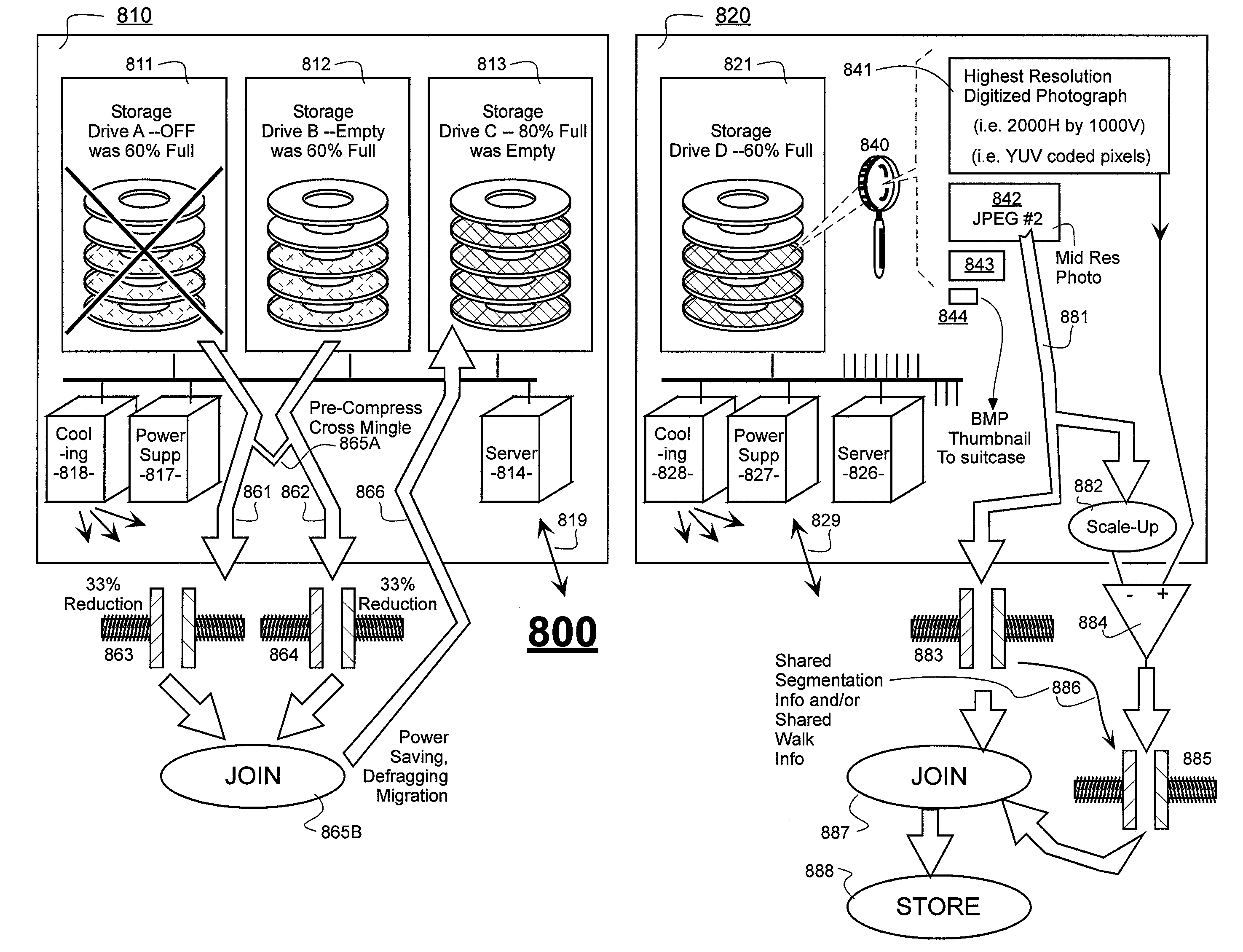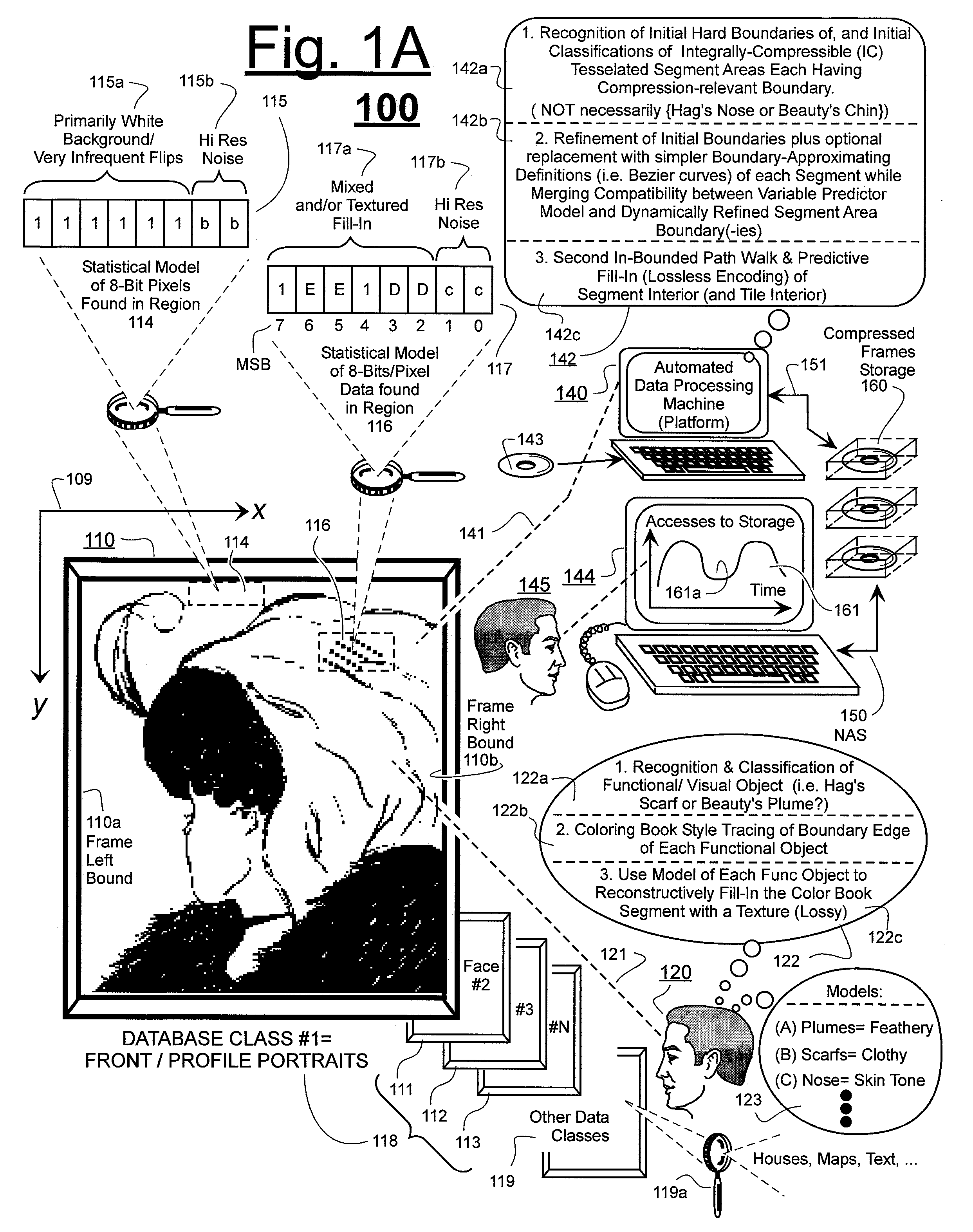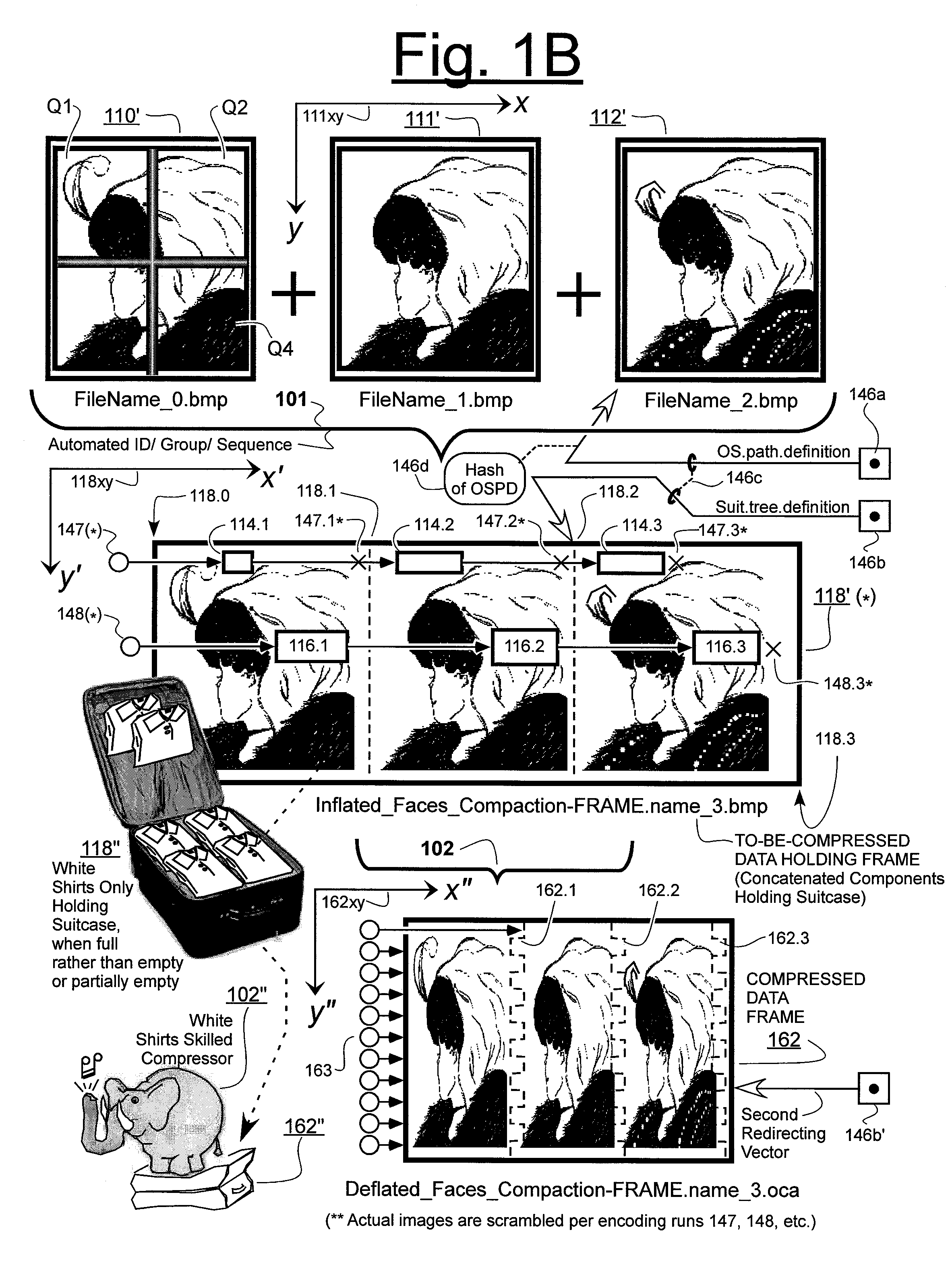Methods and Apparatus for Reducing Storage Size
a technology of storage size and reducing method, applied in the field of methods and apparatus for reducing storage size, can solve the problems of not achieving the desired reduction of file size, output file size is not reduced in size, and entropy encoding cannot be effectively used to compress a signal, etc., and achieve the effect of saving energy
- Summary
- Abstract
- Description
- Claims
- Application Information
AI Technical Summary
Benefits of technology
Problems solved by technology
Method used
Image
Examples
Embodiment Construction
[0061]Overview
[0062]A variety of specific machine implemented techniques are disclosed herein for reducing storage size of information represented initially by first digital data stored in first storage space or in a first plurality of storage drives. The detailed discussion will first take a bird's eye overview flight of the material disclosed herein and then a more detailed look at exemplary embodiments represented in the various drawings.
[0063]One of the machine-implemented automated methods disclosed herein comprises the steps of: (a) decomposing a data file or a user-formed compilation of files (e.g., from a user folder) into a plurality of data sequences; (b) identifying among the decomposed sequences those that are sequentially efficiently compressible (SEC) with respect to one another in terms of symbol occurrence statistics and / or super-symbol occurrence statistics and / or sub-symbol occurrence statistics; and (c) identifying among the decomposed sequences those that are not...
PUM
 Login to View More
Login to View More Abstract
Description
Claims
Application Information
 Login to View More
Login to View More - R&D
- Intellectual Property
- Life Sciences
- Materials
- Tech Scout
- Unparalleled Data Quality
- Higher Quality Content
- 60% Fewer Hallucinations
Browse by: Latest US Patents, China's latest patents, Technical Efficacy Thesaurus, Application Domain, Technology Topic, Popular Technical Reports.
© 2025 PatSnap. All rights reserved.Legal|Privacy policy|Modern Slavery Act Transparency Statement|Sitemap|About US| Contact US: help@patsnap.com



